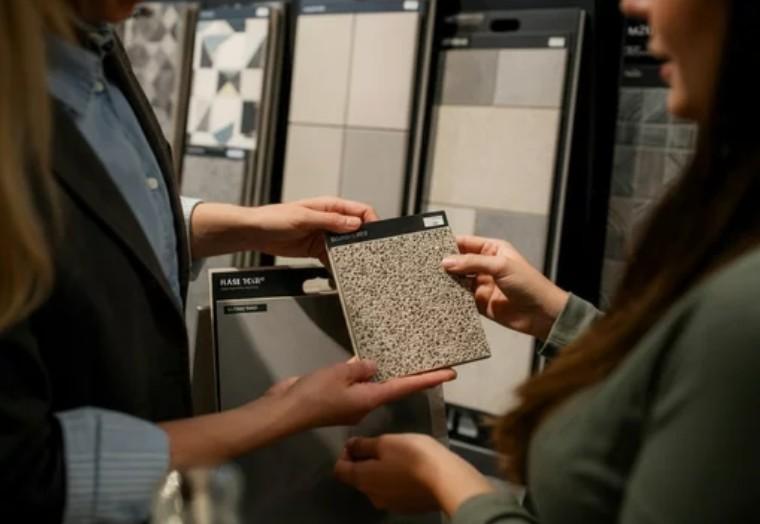Italian tiles are synonymous with style, durability, and artisanal quality, making them ideal for home upgrades and commercial spaces. Yet, their price can be a hurdle for budget-conscious projects.
The bright side? You can enjoy Italian tiles without compromising quality or your wallet. Here’s how to shop smart.
1. Start with a Precise Plan
Lay the groundwork by measuring your space carefully—verify twice. Ask:
- How much square footage will you cover?
- Do you need extra tiles for cuts, breakage, or spares?
- What tile size and type suits your project?
Misjudging quantities leads to overbuying or shortages. A clear plan prevents these issues.
Tip: Budget an extra 10% for cuts and reserves. For complex layouts, increase to 15%.
2. Learn Tile Grading Basics
Italian tiles are categorized by quality:
- Grade 1: Premium, flawless tiles for walls or low-traffic areas.
- Grade 2: Slight blemishes, durable, great for busy floors.
- Grade 3: More imperfections, cheaper, suited for rustic or secondary spaces.
Grade 2 tiles often balance quality and affordability. Check the PEI rating for durability:
- PEI 1–2: Walls only.
- PEI 3: Light floors (e.g., bathrooms).
- PEI 4–5: Heavy-traffic areas (e.g., kitchens).
Choose tiles based on your space’s needs, not just their showroom look.
3. Shop Across Channels
You can buy tiles from:
- Showrooms: Hands-on but often pricier.
- Online stores: Affordable with wide variety, though images may mislead.
- Direct importers: Cost-effective for bulk, but delivery can be slower.
Ask:
- Is this first- or second-grade tile?
- What’s the return process?
- Are there clearance or overstock deals?
- What’s the shipping cost and delivery type?
Evaluate the full cost, not just the tile price.
4. Hunt for Overstock Bargains
Surplus or discontinued tiles are often sold at steep discounts.
Ask your tiles supplier about:
- End-of-line designs.
- Leftovers from large projects.
- Usable tiles from damaged boxes.
Savings can reach 20–50%, but stock runs out fast. Be flexible with colors or patterns.
5. Mix Tiles Strategically
Using Italian tiles everywhere is costly. Instead:
- Use Italian tiles for statement areas like backsplashes, pairing with basic ceramics.
- Combine premium Italian floor tiles with cheaper wall tiles.
- Add Italian tile accents like mosaics sparingly.
This delivers luxury without the high cost.
6. Select a Reliable Tiles Supplier
A trustworthy tiles supplier ensures quality. Choose one who:
- Specifies tile grades and finishes clearly.
- Confirms authentic Italian tiles, not knockoffs.
- Resolves delivery issues quickly.
- Advises on installation and maintenance.
If a price seems too low, investigate—fake tiles are common. A good supplier is open.
7. Budget for Extras
Tiles are just one expense. Include:
- Adhesive and grout: Quality ensures longevity.
- Shipping: Can be high for heavy tiles.
- Installation: Labor or DIY tools.
- Maintenance: Some tiles need sealants or care.
Plan for the whole project to avoid surprises.
8. Buy Seasonally
Tile prices peak in spring and summer. Winter often brings better deals.
To save:
- Shop off-season.
- Look for sales or contractor discounts.
- Be flexible with delivery.
Full-pallet discounts may apply for large orders.
9. Stick to Classic Styles
Trends fade quickly. For lasting value, choose:
- Neutral colors.
- Timeless shapes like subway or herringbone.
- Durable finishes.
Use trendy tiles in small, easily updated areas.
10. Talk to Your Installer
Before buying, consult your installer about:
- Tile suitability for your space.
- Layout challenges.
- Special tools or adhesives.
- Waste estimates.
Their input saves you from costly errors.
Conclusion: Quality on a Budget
Italian tiles are worth it when bought wisely. Prioritize value, plan thoroughly, and shop carefully to achieve the look you want without overspending.



